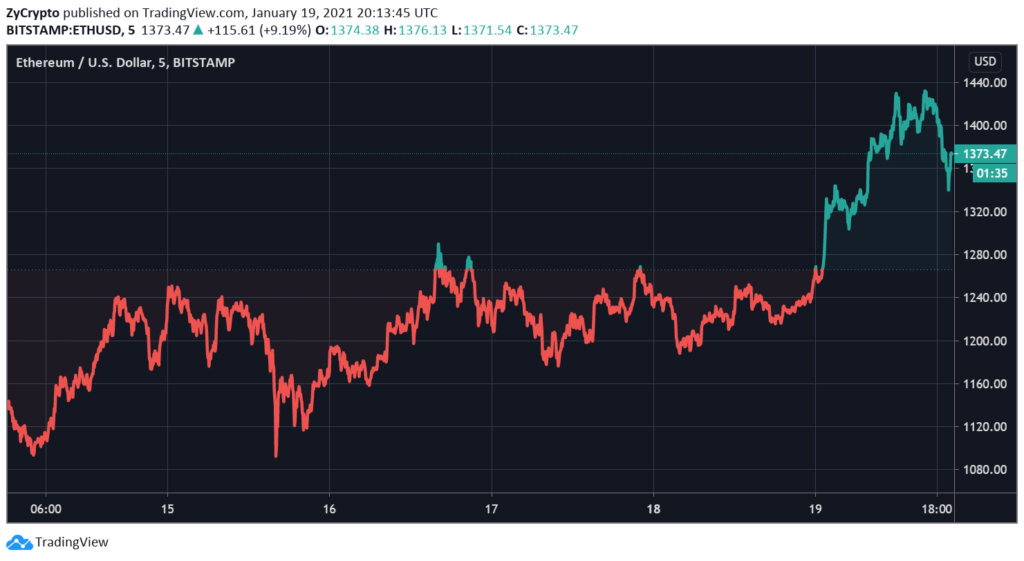Scalability and High Gas Fees behind Ethereum’s Failure to Double All-Time High Price Like Bitcoin
8
5

The world’s second-largest cryptocurrency Ethereum is in the spotlight for underperforming this bull market compared to Bitcoin. Data by CoinGecko shows that Bitcoin has doubled its price 19 times in less than a year, with impressive feats such as rising from $31,457 on January 2, 2020, to its ATH of over $41,000. In the same time frame, ETH has managed to breach $1,400 but is yet to break its 2018 ATH of $1,448 at around $48 away from that figure.

According to real-time crypto assets data provider ByteTree, Ethereum’s underperformance is directly linked to its existing scalability and high gas price issues.
“There are two key drivers of Ethereum’s under performance relative to Bitcoin: It’s scalability issues, and secondly, the impractical costs for its users.”
ByteTree adds that as long as Ethereum continues to have exorbitant gas prices especially at peak network activity periods, its value proposition, which centers around becoming bigger and better than bitcoin will remain unachieved.
Ethereum’s High Gas Prices vs Scalability in DeFi
The positive reception of ETH’s rally shows that the sentiment around the second most popular cryptocurrency is positive. However, ETH gas issues make investors shy away from moving the asset, and especially retail investors, due to the expensive fees associated with the network.
Gas price refers to the cost of transacting on Ethereum which is expressed in Gwei, and which discourages spamming activity on the network. With the growth of the DeFi sector, gas has risen to its historically highest prices.
“DeFi has highlighted the inability of Ethereum to perform its role for early adopters.”
In terms of scalability, ByteTree says that the issue is not about Ethereum’s ability to host the booming DeFi sector but the outrageous cost of using various smart contracts which becomes economically inefficient.
“Over 17,500 ETH ($6.8 million) are currently being spent on fees daily on Ethereum.”
DeFi has contributed greatly to the high complexity of transacting on Ethereum, thus making straight forward transactions like moving ETH between different smart contracts ten times more expensive than simple ETH transfers between wallets.
The challenge is heightened by the fact that 99% of all transactions on Ethereum are related to DeFi activity. However, the DeFi sector has grown to a $2 billion industry for both miners and smart contract users.
“Clearly, DeFi fees are lucrative, and due to potentially long waiting times, many users opt to pay an unnecessarily large network fee.”
Ethereum 2.0 and EIP-1559 Could Be the Answer
Apart from the migration to ETH 2.0, Ethereum will also implement the Ethereum Improvement Proposal (EIP-1159) initiated by Cofounder Vitalik Buterin and Eric Conner. Both improvements aim to fix Ethereum’s scalability and the inefficiency of its gwei pricing mechanism.
The successful implementation of the Phase 0 step of the plan has also contributed greatly to the positive attitude toward the future of ETH as the internet of all things. As earlier reported, ETH 2.0 has attracted over 2% of total ETH from investors. ByteTree concludes:
“Systematic changes like EIP-1559 and ETH 2.0 have great potential to improve the current gas issues. However, it remains to be seen as to whether miners will be incentivized enough to continue to support the network.”
8
5









